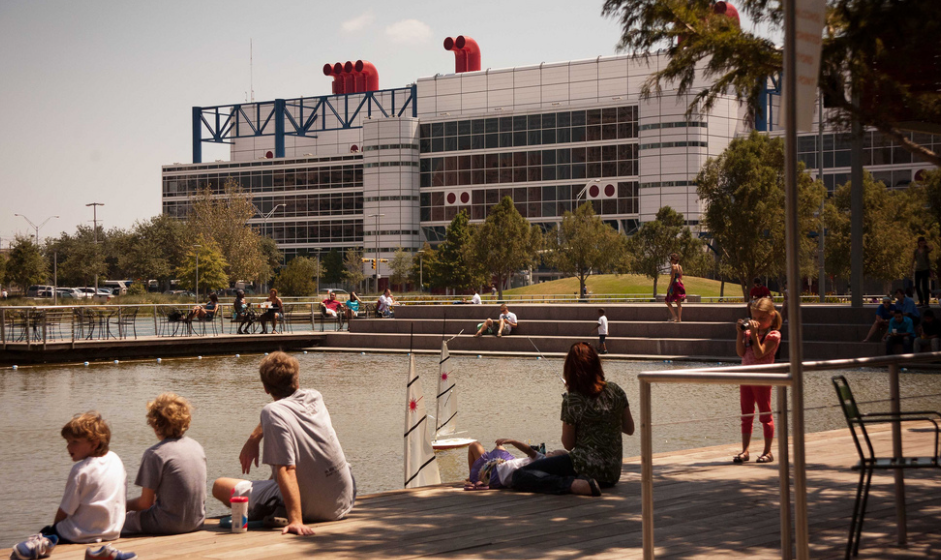The sudden departure of Dawn Ullrich as president and chief executive officer of Houston First Corp. has shined a spotlight on that strange animal known in Texas as the “local government” – a quasi-governmental entity that’s also a nonprofit organization able to receive and spend both taxpayer funds and private donations in order get things done that benefit the public.
Though they’re not always well understood, local government corporations are commonly used – especially in Houston – to create public-private partnerships that can be more efficient and flexible than government agencies.
The city has about 30 or so local government corporations, including Houston First, the Houston Parks Board and the Houston Zoo, as well as close to two dozen redevelopment authorities around the city. The county has also created a number of local government corporations, including the Harris County Sports and Convention Corporation, which runs NRG Park.
The system is flexible, and it’s efficient. And the benefit is obvious. The Parks Board, for example, was able to accept $100 million in city bond funds and another $120 million in private donations to build out the Bayou Greenways plan – something the city parks department might not have been able to do. (Local government corporations can receive tax revenue from the city or the county, as well as revenue their activities generate, but they have no independent authority to levy taxes.)
But sometimes there are so many entities floating around that it’s also confusing and hard to keep track of. Take Houston First as an example.
Houston First is, indeed, a local government corporation under Texas law. It was created in 2011 as a consolidation of a city department – the Department of Convention and Entertainment Facilities, which managed the George R. Brown Convention Center among other venues – and a previous local government corporation, the Houston Convention Center Hotel Corporation, which was created in 2000 to build, own and manage the Hilton Americas.
The Department of Convention and Entertainment Facilities is still “on the books” as a city department that generates and spends revenue. But, as a practical matter, Houston First performs that function. (This “on the books” status could be part of the reason Ullrich claimed that she could not be fired by Houston First’s board of trustees and only by the mayor.)
Things get even more complicated when you get down to the neighborhood or business district level, where redevelopment authorities and management districts perform important functions that would probably be undertaken by the city government.
Most of the city’s local government corporations are redevelopment authorities, which work in tandem with TIRZes, or tax increment reinvestment zones (which aren’t local government corporations) to negotiate with private developers and build public infrastructure in different districts around the city, such as downtown and Midtown.
Technically, for example, the Midtown Redevelopment Authority and Midtown TIRZ are separate entities, but they have the same board of directors and essentially function as one entity.
The redevelopment authorities often work in close coordination with management districts – which are a different kind of animal altogether. Management districts are special districts created by the state that can levy additional property taxes to pay for a wide variety of neighborhood-level services ranging from landscaping to marketing.
Part of the reason that it is hard to disentangle all these entities is that they sometimes share offices and staff.
For example, in downtown Houston, the Midtown Redevelopment Authority/TIRZ and the Midtown Management District are co-located and often share staff. However, they perform different functions and have different boards.
The Downtown Management District and the Downtown Redevelopment Authority/TIRZ are co-located with Central Houston, a private business association that helped to hatch the other entities.
All this can be pretty confusing when all you want to do is call your City Council member to find out how something works.
And such quasi-government entities can sometimes result in controversy, as when the Montrose bridge lights went out because of a dispute between the Montrose Management District and some of its property owners. A parallel Montrose TIRZ was created in 2015 after residents complained about a plan to add Montrose to the Midtown TIRZ.
But in Houston – as in almost no other American city – government is limited (as is trust in government) and philanthropy is strong and deeply involved in city building efforts. So it’s almost inevitable that public-private entities such as local government corporations will play an important role.
So long as they are open and transparent – and remain accountable to elected officials and the public at large – they can play an important role in helping Houston become a more vibrant urban place.
This article originally appeared in the Houston Chronicle.

